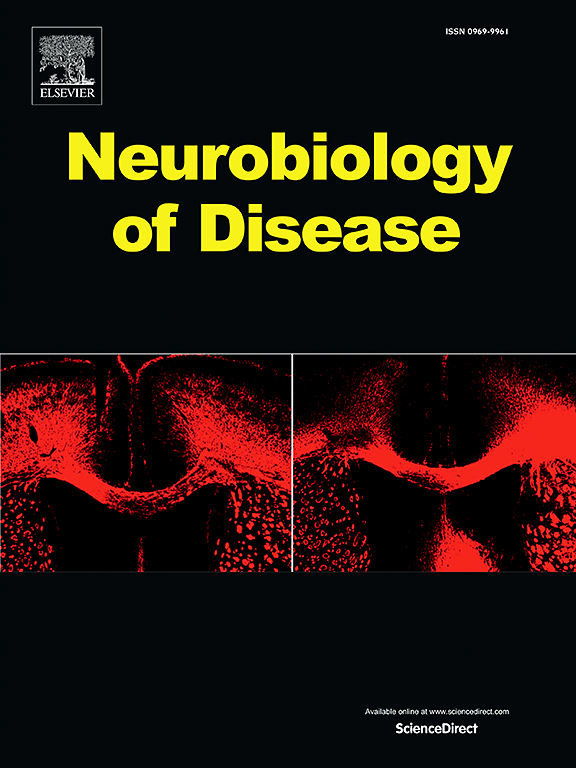Less locus coeruleus degeneration and its enhanced influence on neural circuit in Parkinson's tremor
IF 5.6
2区 医学
Q1 NEUROSCIENCES
引用次数: 0
Abstract
Objectives
The involvement of the locus coeruleus in Parkinson's tremor remains unclear. We aimed to decode the role of locus coeruleus in Parkinson's tremor.
Methods
We used MRI to examine 120 Parkinson's disease, including 48 tremor-dominant (TD) and 72 postural instability/gait disorder (PIGD), as well as 83 healthy controls. Neuromelanin-sensitive MRI accessed the contrast-to-noise ratio of locus coeruleus. Spectral dynamic causal modeling based on resting-state functional MRI accessed the effective connectivity from locus coeruleus to the cerebello-thalamo-cortical circuit. The pivotal nodes of cerebello-thalamo-cortical circuit included ventral intermediate nucleus, motor cortex, and cerebellum.
Results
Both TD and PIGD patients exhibited lower bilateral contrast-to-noise ratio of locus coeruleus than healthy controls. But TD patients had higher contrast-to-noise ratio of locus coeruleus than PIGD, accompanied by increased effective connectivity from locus coeruleus to cerebello-thalamo-cortical circuit than healthy controls and PIGD patients on the more-affected side (P < 0.003125, one-way analysis of covariance). The contrast-to-noise ratio of locus coeruleus and effective connectivity (e.g. locus coeruleus→motor cortex) positively correlated with rest tremor in TD patients (R = 0.47, P = 0.002; R = 0.427, P = 0.003, respectively).
Conclusions
TD patients exhibited less locus coeruleus degeneration than PIGD patients, alongside increased influence from locus coeruleus to the cerebello-thalamo-cortical circuit than healthy controls and PIGD patients. The structural/functional alterations of locus coeruleus are closely associated with rest tremor, suggesting the potential for tremor treatment targeting the locus coeruleus noradrenergic system.
帕金森氏震颤患者蓝斑变性减少及其对神经回路的增强影响。
目的:蓝斑在帕金森震颤中的作用尚不清楚。我们的目的是解码蓝斑在帕金森氏震颤中的作用。方法:我们使用MRI检查了120例帕金森病患者,包括48例震颤显性(TD)和72例姿势不稳定/步态障碍(PIGD),以及83例健康对照。神经黑色素敏感MRI获得蓝斑的对比噪声比。基于静息状态功能MRI的频谱动态因果模型获取了蓝斑与小脑-丘脑-皮层回路的有效连通性。小脑-丘脑-皮层回路的关键节点包括腹侧中间核、运动皮层和小脑。结果:TD和PIGD患者的双侧蓝斑对比噪声比均低于健康对照组。但TD患者蓝斑比PIGD患者高,且蓝斑与小脑-丘脑-皮质回路的有效连通性比健康对照组和PIGD患者高(P 结论:TD患者蓝斑变性比PIGD患者少,同时蓝斑对小脑-丘脑-皮质回路的影响比健康对照组和PIGD患者大。蓝斑的结构/功能改变与静止震颤密切相关,提示针对蓝斑去肾上腺素能系统的震颤治疗的潜力。
本文章由计算机程序翻译,如有差异,请以英文原文为准。
求助全文
约1分钟内获得全文
求助全文
来源期刊

Neurobiology of Disease
医学-神经科学
CiteScore
11.20
自引率
3.30%
发文量
270
审稿时长
76 days
期刊介绍:
Neurobiology of Disease is a major international journal at the interface between basic and clinical neuroscience. The journal provides a forum for the publication of top quality research papers on: molecular and cellular definitions of disease mechanisms, the neural systems and underpinning behavioral disorders, the genetics of inherited neurological and psychiatric diseases, nervous system aging, and findings relevant to the development of new therapies.
 求助内容:
求助内容: 应助结果提醒方式:
应助结果提醒方式:


